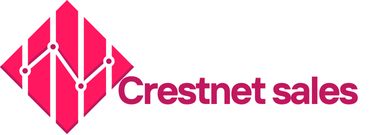Importance of Email Automation in Customer Loyalty
Email automation is a critical asset in enhancing customer loyalty, particularly for UK specialty coffee shops. It simplifies managing customer communications, allowing businesses to maintain consistency. But why is email automation so effective? It streamlines the process of sending personalized messages at the appropriate times, which helps to sustain customer engagement.
For specialty coffee shops aiming to bolster customer loyalty, email automation offers several key benefits. First, it accommodates automated greetings and birthday messages, fostering a personal connection. Second, it enables the segmentation of customer lists, which allows coffee shops to tailor content based on preferences or purchasing habits. This precision enhances the relevance of each email, making customers feel understood and valued.
Also to see : Top benefits of collaborating with a new york seo agency
Moreover, automation aids in maintaining a steady communication flow without overwhelming staff resources. By automating routine tasks such as newsletters and promotions, coffee shops can focus on specialty coffee offerings and improve the overall customer experience. Ultimately, strategic email automation can make a huge difference in nurturing and retaining a loyal customer base, proving indispensable for thriving in the competitive market of UK specialty coffee shops.
Strategies for Effective Email Segmentation
Segmenting emails is crucial for effective marketing and customer relationship management. Email segmentation involves dividing your email list into targeted groups, allowing for personalised and targeted campaigns. By leveraging customer insights, businesses can cater their communication to meet specific interests and needs.
Also to see : Partner with an expert seo agency in new york for growth
Understanding Customer Behavior
Understanding customer behaviour is foundational to effective email segmentation. Tracking customer insights such as purchase history, browsing habits, and engagement metrics is vital for crafting messages that readers find relevant and compelling. By deciphering patterns and preferences, businesses can ensure that their communication resonates with each segment.
Creating Segments Based on Purchase History
Effective segmentation can also be achieved by analysing purchase history. Grouping customers based on previous buying habits allows for the delivery of tailored promotions that are more likely to convert. By understanding who repeatedly buys certain products, you can create targeted campaigns that entice them to return.
Targeting Local Preferences
A locally tailored approach can boost engagement significantly. Focusing on regional needs and cultural nuances enhances the relevance of campaigns. Insights into local preferences can be immensely beneficial, especially when supported by case studies from successful specialty coffee shops. These examples reveal techniques for identifying high-value segments and how effective targeting meets customer expectations.
Personalization Techniques for Email Campaigns
Personalized messaging significantly enhances customer engagement and fosters customer retention. By addressing customers by name, acknowledging their past purchases, or referring to their preferences, companies create a more intimate and engaging interaction. This form of email personalization not only increases the likelihood of emails being opened but also fortifies customer loyalty.
Various tools and software are available for effective email personalization. Platforms like Mailchimp and HubSpot offer personalized templates that automate the customization process based on customer data. These tools ensure that every email feels tailor-made, without requiring extensive manpower, thus increasing overall campaign efficiency.
Successful examples of personalized email campaigns abound. Consider a brand offering a loyalty program that sends personalized points updates and exclusive offers tailored to individual purchasing habits. Such tactics drive higher engagement and encourage repeat purchases by making customers feel valued and understood. For instance, Spotify’s year-end “Wrapped” campaign, which highlights users’ most listened to tracks and albums, is a compelling example of dynamic personalization driving both nostalgia and user sharing.
Through effective email personalization, businesses can foster robust customer relationships and drive both engagement and loyalty, ultimately enhancing their bottom line.
Automating Your Email Campaigns
Automating email campaigns transforms how businesses, especially UK coffee shops, engage with customers—enhancing both efficiency and reach.
Overview of Popular Automation Tools
When considering email automation tools, several standout options suit various needs. Popular choices include Mailchimp and HubSpot, each offering robust features. Mailchimp excels in user-friendly workflow automation, ideal for those new to automation. Conversely, HubSpot offers advanced functionalities, perfect for those seeking comprehensive solutions. While both tools are popular, they differ in their specific offerings and suitability for distinct campaign requirements, allowing businesses to select what best matches their goals.
Designing Automated Workflows
Crafting effective automated workflows is a precise art, blending strategic planning with automation. Begin by defining clear goals and suitable triggers to guide the automation process. Keeping the process streamlined but adaptable ensures greater efficiency and responsiveness. Incorporating feedback loops allows continual refinement, enhancing the value of each engagement.
Scheduling Emails for Optimal Engagement
Success in email marketing often hinges on timing. Harnessing automation tools enables optimal scheduling to maximise open rates. Conducting analyses on recipient behaviours and preferences guides when emails are most likely to capture attention. Timing strategies focusing on specific customer segments can dramatically elevate engagement rates, transforming email campaigns into powerful, efficient communication tools.
Measuring Success and Engagement
Understanding the success of an email campaign can be distilled into tracking Email Metrics effectively. Two primary indicators to gauge email effectiveness are open rates and click-through rates (CTR). Open rates measure the percentage of recipients who actively open an email, providing insight into subject line effectiveness. CTR details how many recipients engage further by clicking on links within the email, signaling content relevance.
To drill down on Campaign Performance, utilise advanced tools like Google Analytics or specialized email platforms. These tools offer comprehensive metrics for engagement tracking, shedding light on customer interactions and preferences. They reveal data-driven insights, such as the peak times for engagement or the most responsive audience segments, allowing for targeted refinements in future campaigns.
Analyzing this data is crucial. It provides the groundwork for personalisation and segmentation, which boosts customer loyalty. By recognizing patterns in engagement, marketers can recalibrate strategies to meet consumer expectations more aptly. This continuous loop of assessment and adjustment empowers brands to remain competitive.
Incorporating comprehensive tools for Engagement Tracking and systematically reviewing metrics not only enhances campaign outcomes but also fortifies the customer relationship, fostering long-term loyalty. Achieving success requires not just initial implementation, but relentless refinement informed by precise data analysis.
Case Studies of Successful Email Campaigns
Exploring email campaign success stories can provide insights into the effectiveness of different strategies. Two standout examples demonstrate the power of tailored messaging and strategic planning.
Case Study 1: Local Specialty Coffee Brand
A local specialty coffee brand focused on capturing the unique essence of their products. Their email campaign integrated storytelling around their ethically-sourced beans, using vivid imagery and engaging narratives. Results showed a 30% increase in customer engagement. The campaign’s success underscores the importance of aligning messaging with brand identity and values.
Case Study 2: National Chain’s Loyalty Program
A national chain revamped its stagnant loyalty program by customizing email content based on customer preferences. The strategy involved sending personalized offers and updates, leading to a 20% boost in customer retention and a significant uplift in loyalty program enrollments. This case highlights the effectiveness of personalisation in driving customer loyalty.
Lessons Learned from UK Coffee Shops
From these case studies, several best practices emerge for UK coffee shops:
- Personalisation and storytelling significantly enhance engagement.
- Align email content with brand values to resonate with customers.
- Use data-driven insights to tailor offerings to customer preferences.
By applying these approaches, businesses can develop impactful email campaigns that cement customer relationships and boost sales.
Local Consumer Behavior and Preferences
In the ever-evolving landscape of the UK coffee market, understanding UK Coffee Consumer Insights is crucial for crafting effective Marketing Strategies. Specialty coffee has gained prominence across various regions, each with its unique tastes and buying patterns. For instance, Londoners might prefer a bold espresso, while customers in Edinburgh favor milder brews. Recognizing these regional preferences enables businesses to tailor their offerings to match the local palate.
Employing Marketing Strategies that utilize these insights can significantly improve engagement. For instance, sending out personalized email campaigns based on Local Preferences can enhance customer connection. By highlighting region-specific coffee varieties and promotions, companies can create a more impactful message.
Moreover, as trends shift, it’s important for businesses to remain adaptable. Specialty coffee consumption is widespread and constantly changing, meaning keeping a close eye on UK Coffee Consumer Insights is necessary. Whether it’s the rise of ethically sourced beans or the preference for certain brew methods, understanding these details ensures your approach remains relevant and compelling.
In conclusion, tapping into regional tastes and preferences not only supports more targeted Marketing Strategies but also fosters a stronger bond with the consumer, paving the way for greater brand loyalty and satisfaction.
Conclusion – Future of Email Marketing in Specialty Coffee
The future trends in email marketing for the specialty coffee market are evolving rapidly. With technology advancing, newer innovations allow businesses to engage with consumers more effectively. One such trend to observe is the increased use of AI-driven personalisation. This innovation enables coffee brands to tailor content specific to their customer’s profiles, enhancing engagement.
In the evolving landscape of consumer engagement, interactive emails are gaining traction. They offer immersive experiences, such as embedded videos or click-to-reveal features, making the email more than just a message—it’s an interactive experience. This is crucial as consumers today seek dynamic content that goes beyond plain text.
To stay ahead in the market, coffee brands should focus on implementing segmentation strategies. This allows for targeted campaigns that resonate with specific audiences, thereby increasing open and conversion rates. Additionally, leveraging data analytics to better understand consumer preferences and behaviors is essential.
Recommendations for industry leaders include investing in automation tools to streamline their email marketing efforts, ensuring they deliver the right message at the right time. By embracing these innovations, brands can not only maintain relevance but also carve out a competitive edge in the specialty coffee sector.










